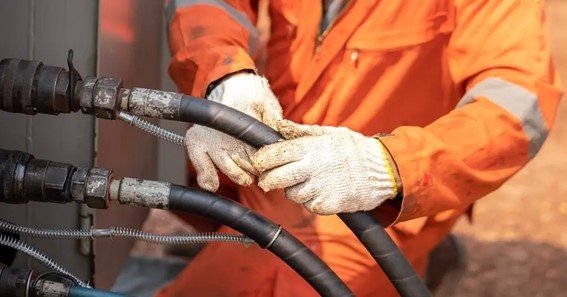If you’re working with a GHS (General Hydraulic Solutions) system, it’s essential to maintain optimal performance by regularly bleeding the hydraulic system. This process removes air that can cause erratic movements, noise, and decreased efficiency.
Understanding how to properly bleed the system is key to keeping it running smoothly. In this blog, we’ll walk you through how to bleed a hydraulic system on a GHS system effectively.
Why Bleeding A Hydraulic System Is Important
Air trapped in a hydraulic system can result in spongy operation, cavitation, or even complete system failure over time. Bleeding the system ensures that it operates at full efficiency by eliminating trapped air, which can lead to performance issues such as pressure drops, sluggish response, and component wear.
Step-by-Step Guide to Bleeding a Hydraulic System on a GHS System
1. Prepare the System
- Depressurize the System: Before you begin, ensure that the system is not under pressure. Turn off the power and release any residual pressure using the system’s control valves.
- Check Fluid Levels: Make sure the hydraulic fluid is at the correct level. Low fluid levels can cause additional air to enter the system during operation.
2. Locate the Bleed Valves
- Find the Bleed Valves: On a GHS system, the bleed valves are typically located at the topmost part of the hydraulic cylinder or near the hose connections. Ensure that the cylinder is positioned so that the air can easily escape through these valves.
3. Bleed the System
- Open the Valve: Slowly turn the bleed valve to allow air to escape. You should hear a hissing sound as the air is released. Keep a container handy to catch any hydraulic fluid that may come out with the air.
- Watch for Fluid Flow: Continue bleeding until you see a steady stream of hydraulic fluid without any bubbles. This indicates that the air has been fully expelled from the system.
4. Monitor Fluid Condition
- If the fluid appears foamy or discolored, it might be necessary to filter or replace it with new hydraulic oil. Clean hydraulic fluid is essential for maintaining the system’s performance.
5. Close the Valve and Check
- Once the air has been bled from the system, close the valve securely. Check the hydraulic fluid level again and top it off if necessary.
Conclusion
Bleeding your GHS hydraulic system is a straightforward but essential maintenance task that can prevent major performance issues. By removing trapped air from the system, you can ensure smoother, more efficient operation and prolong the life of your equipment.
FAQ
-
Why is it important to bleed a hydraulic system?
Bleeding removes trapped air, which can cause erratic operation, pressure loss, and potential damage to hydraulic components.
-
How often should I bleed my hydraulic system?
It’s recommended to bleed the system after any repairs or if the system shows signs of air contamination, such as noise or sluggish movements.
-
What happens if I don’t bleed the hydraulic system?
Failure to bleed the system can lead to cavitation, damage to hydraulic seals, and inefficient operation, resulting in costly repairs over time.
-
Can I bleed the system myself, or should I hire a professional?
While you can bleed the system yourself with the proper tools and safety precautions, hiring a professional ensures that the process is done correctly and safely.
-
What type of hydraulic fluid should I use when bleeding the system?
Always refer to the manufacturer’s guidelines for the recommended type of hydraulic fluid for your specific GHS system.









